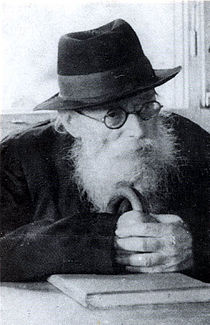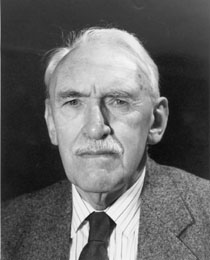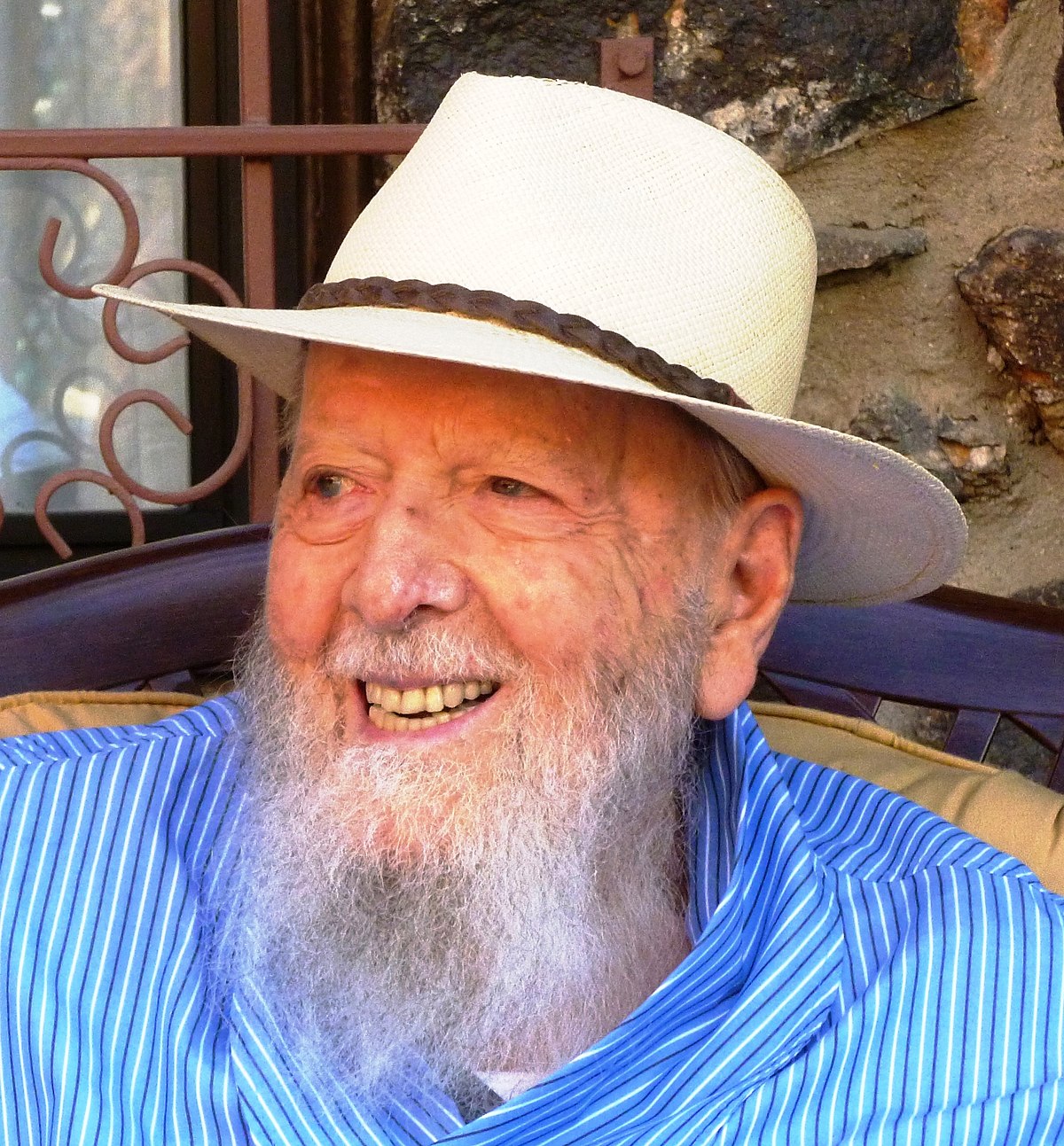I have recently completed reading two biographies about two very diverse but influential people. I will admit going from the sublime to the very less sublime in the choice of reading these biographies. But all human beings are fascinating, and their life’s stories are always engrossing. This is especially true when the biography book is itself well written, thoroughly researched, objectively presented and is not hagiographic. Both of these biographies had these positive literary qualities to them. Dr. Binyamin Braun of the Judaic Studies Department of Hebrew University has written an exhaustive study of Rabbi Avraham Yehoshua Karelitz (commonly known by the name of his scholarly books and his acronym, Chazon Ish.) Braun details for the reader the life and accomplishments of this remarkable scholar and traces for us the rise of the Chazon Ish in becoming the primary decider of halachic law in Israel in the 1940’s and early 1950’s and the leading authority on all matters – religious, societal and temporal – for much of the religious society of world Jewry. What makes all of this more remarkable is the fact that he never officially served as a rabbi or a teacher or the head of any religious or educational institution. He earned his livelihood by the sale of his books and from the income earned from his wife’s textile store. For a great portion of his life he operated in complete

anonymity. He even did not state his name as being the author of his works, hiding his identity in the acronym Ish – aleph, yud, shin, Avraham YeShayahu. Nevertheless, he was brought to worldwide attention and renown, mainly through the efforts of Rabbi Chaim Ozer Grodzensky, the famed rabbi in Vilna and the leader of Orthodox Jewry in Lithuanian in the inter-war years of the first part of the twentieth century. Rabbis Grodzensky and Karelitz became very close to each other when Chazon Ish toiled to have Rabbi Chaim Ozer Grodzensky elected as the official rabbi of Vilna, a bid for that office that failed. Nevertheless, Rabbi Chaim Ozer Grodzensky touted Chazon Ish publicly and incessantly as being the leading scholar of the generation. This was especially the case when Chazon Ish immigrated to Israel in the early 1930’s and took up residence in the then small dusty village of Bnei Brak.
As Braun details for the reader Rabbi Karelitz lived a very painful and troubled personal life. His marriage, to put it mildly, was not a happy one. The marriage produced no children, a fact that he deeply mourned. His health was always precarious and for most of his later years he studied, wrote and received visitors while lying in bed. Despite all these personal difficulties, through his scholarly works and forceful opinions he rose to become the chief decider and shaper of the non-Zionist section of the religious society of Israel. To a great extent, he was an iconoclast. Not having himself ever studied in the Lithuanian yeshivot system he was not at all enthusiastic about their Talmudic study methodology and educational philosophy. He also felt that the Mussar movement was incorrect in its approach to Torah study and matters of simple faith, and its types of interpretation of Biblical events and Talmudic sayings and anecdotes. He was an early supporter of Poalei Agudat Yisrael and was the original halachic mentor of its kibbutzim and moshavot, though he later distanced himself from many of its political decisions. In the matters of agricultural plantings and the milking of cows on Shabat he was more lenient in his rulings than, for instance, was Rabbi Kook but he was a firm opponent of the implementation of the obviously fictitious but legally technically correct sale of the land owned by Jews to Arabs during the shemitta/sabbatical seventh year. He came up with other solutions to help the Jewish farmers and land survive during that time period.
He opposed all forms of national service for religious girls and his meeting with David Ben-Gurion on the issue became the stuff of legend. He opposed the vast majority of rabbinic opinion as to where halachically speaking the international dateline should be placed and sent a famous telegram to the Mir yeshiva stranded then in Kobe Japan instructing them to follow his opinion as to what day to fast as being Yom Kippur. He also established a new standard of sizes, weights and measures in halacha that was much larger in volume and size than previously accepted norms. He reformulated the halachic nature of electricity and he debated this definition of the nature of electricity and its usage on Shabbat with Rabbi Shlomo Zalman Auerbach who was much more lenient on the subject. Braun points out that in all these matters Chazon Ish marshaled massive scholarship to buttress his opinions. But Braun himself also quotes Chazon Ish that many times he relied on his intuition as well in deciding matters of halachic problems. He also gave great credence to the texts of the Talmud as they had been received and studied for centuries even when manuscripts discovered later differed with those accepted texts. He stated that customs, texts and practices that had been accepted as being the norm in Jewish society for centuries had become hallowed and immutable no matter what later opinions and scholarship would attempt to change. Dr. Braun’s book provides a fascinating and well researched picture of a great religious leader, his methods of scholarship and his vast influence on religious Jewish society.

The second biography that I read was that of the life of Steve Jobs by Walter Isaacson. This book is a very honest portrayal of a technological and marketing genius who had many serious personality faults and weaknesses. Isaacson describes his troubled youth, his use of drugs for decades, his interest in Eastern religions and Buddhist cults, his unending profanity and his brutal cruelty to others who worked for him or as he saw it sometimes against him. He strove for perfection in his line of products and in the company that he built from scratch. He only wanted “A people” working for him and he ruthlessly disposed of anyone who he felt was not an A person. He was therefore brutal to those who worked for him. His mantra was that one could only have an A company if there were no B people involved in it. His abrasive manner and ruthlessness eventually forced the Board of Directors to dismiss him as the operating head of Apple. He then quickly developed an animation movie technology studio called Pixar that became enormously successful. Pixar was Disney Studios partner in developing and releasing computer animated films that were successful both artistically and commercially. Pixar eventually became a part of Disney and when new management came to power at Disney, Jobs headed for the exit, a multimillionaire many times over by now.
Jobs tasted sweet revenge when Apple began to flounder in sales and new products at the end of the 1990’s. A new board of directors recalled him and once again he became the head and the marketing face of the company. Apple became an enormous success under Jobs – new models of Mac computers as well as entirely new products such as iPhones, iPads and iPods all were created and brilliantly marketed during Jobs’ second tenure as head of Apple. Some of the other products produced by Apple did not fare that well and were rapidly discontinued by the company. Because of his drive for superior design, technology and marketing, Jobs was willing to do away with any product, no matter how large Apple’s investment in it was, if it could not live up to his expectations and the marketing hype that he generated. Steve Jobs himself was no more mellow in his behavior, speech and style in his second term of head of the company than he had been during his first go around. He was married several times and only his last wife was able to deal with him, and this marriage lasted for decades till his death. He had children from different marriages but was a distant if not even estranged father to all his offspring, especially to his oldest daughter.
Isaacson has written a fascinating biography of a complex person who combined within him some of the best talents and worst traits that human beings may possess. Steve Jobs in his own way changed the face of human existence and social interaction. Here again we have an example of the power of an individual to influence and affect the lives of millions of others. He died of cancer at the age of fifty-six, appreciated, envied and extolled by many but mourned by few. Isaacson’s book traces this person’s life and accomplishments as well as his foibles and weaknesses in a readable and honest fashion. I am certain that this book will remain a strong seller for many more decades, especially as Apple attempts to continue its extraordinarily successful run of products and marketing. But it will have to do so without Jobs being involved. No human being is indispensable but again no human being is replaceable. All biographies prove this point and certainly the two biographies I have written about above are examples of this unfailing truth of human existence. We are all uniquely different and we can exploit our differences for good or for better. That is singularly our choice and challenge in life.









